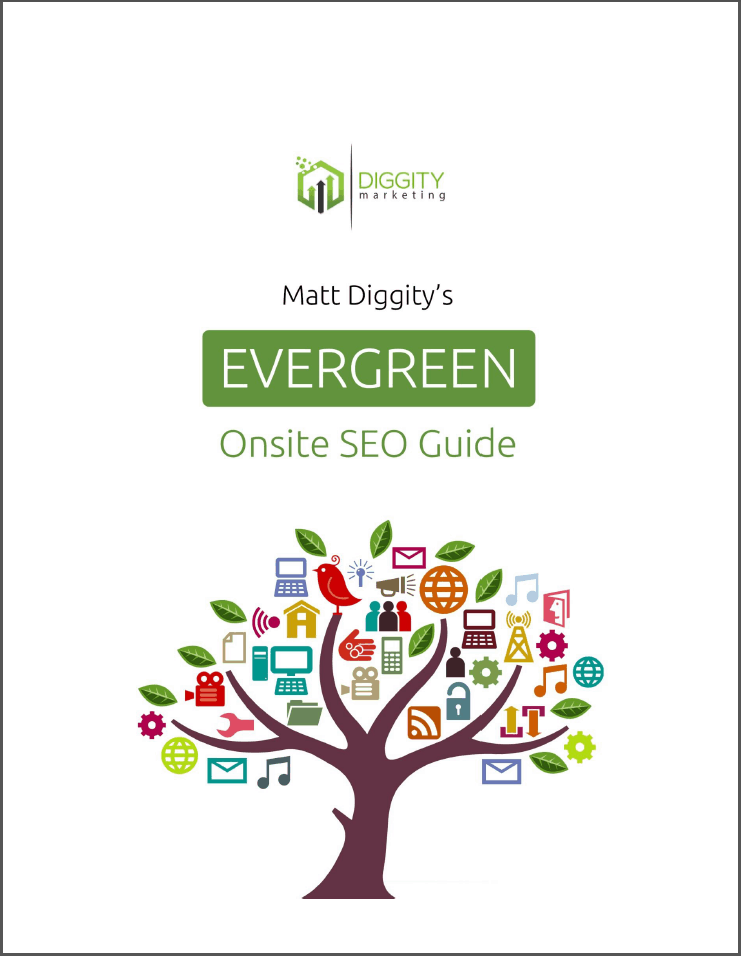
To thrive in today’s business landscape, a website is essential. In fact, over 70% of all small businesses have a website, which bolsters credibility and helps retain customers.
A solid understanding of web hosting is crucial for building a website effectively.
While “hosting a website” might initially appear intimidating, the good news is that no coding or programming expertise is required to manage it yourself.
With years of hands-on experience in the field of web hosting and a track record of successfully guiding numerous beginners through the process, I’ve made this guide to teach you everything you need to know about web hosting, broken down into 5 straightforward steps.
Table Of Contents
Quick Summary
Hosting a website involves storing its data on a server provided by a web hosting company.
Various hosting services exist, including shared, VPS, managed WordPress, dedicated server, and cloud hosting.
To host a website, you need a domain name and a hosting plan, and to choose the type of website (static or dynamic) and hosting server (Linux or Windows).
What Is Web Hosting?
Web hosting is the digital equivalent of finding a space to open a store or run your office in the real world. In the real world, you can either buy a commercial real estate property or rent it.

After getting the property, you move your furniture, equipment, and other inventory into the available space. Web host enables you to do something similar by enabling you to have space for your business on the internet.
Just as you need commercial property to run a store, you need a web hosting provider to run your business online.
However, unlike real estate, you cannot buy web hosting spaces. Maintaining and running the servers needed for web hosting is a very complicated and expensive task.
For cost and practical reasons, most businesses just rent the space from big web host companies. Even giant streaming services like Netflix lease space on servers run by big hosting companies like Amazon, Google, and Microsoft.

These companies take care of all the hardware and software challenges of storing millions of web pages on their servers. And storage is not the main challenge when it comes to web hosting.
As regular internet users, we value one thing above all – fast loading times. Maintaining smooth and uninterrupted access to websites is a significant challenge.
A web hosting provider use special software and power-backup systems to ensure that your website is up and running 24×7.
The Basic Technology Behind Web Hosting Explained
What is a website? It is nothing but a collection of images, videos, lots of text, links, and buttons, held across multiple web pages, all glued together using a programming language like HTML and CSS.

All this information is held in a set of computer files. After you design and build a website, these files have to go someplace, where they can be accessed by others on the internet.
And that location is called a web server. A web server is a type of computer specially designed to store massive amounts of website data and connect it to the internet.
The internet is made up of a network of hundreds of millions of such servers, located in thousands of data centers around the world.
When you create a website, you have to provide it with a unique address called a domain name. When you host your website on a server, you point your domain name to the IP address (location) of that server.
Then when someone enters your domain name into their web browser to reach your site, your website will be displayed.
Why You May Need Web Hosting
The average size of a webpage is just 3MB. Even if your website has 20 or 30 pages, you are only looking at maximum storage requirements of 100-150MB.

So you may think – “why do I need a web service, why not just load the website files on my laptop or regular office computer?”
To answer that question properly, we need to understand the scale and purpose of a website.
Think of a basic office presentation. If you want to do it in a small conference room, you don’t need much – maybe a small projector, a screen/whiteboard, and your own voice will suffice.
If you move the venue to a college lecture hall with a bigger audience, you will need a bigger projector and either speak louder or use a mic and some speakers. Think of a big arena or auditorium, and the challenges escalate further.
It works the same way with a website. Your website is like a store that remains open 24×7, 365 days a year for your target audience. It should guarantee quick and uninterrupted access, with no compromises allowed.

The big data centers accomplish this by running connections to the internet with speeds going into the terabits.
On top of that, they have expensive power backup and data redundancy measures in place to ensure that the connection is not affected by any unexpected event like blackouts.
Technically, you can achieve all this by creating your own web server at your office. It is called an “on-premise” server. But you need big budgets to get the same performance and stability guarantee as those bigger web service hosting providers.

You also need to invest heavily in technology and manpower to achieve all this. Even the largest corporations find it more convenient to outsource this burden to companies that have experience and expertise in dealing with these things.
When you consider all these things, using web hosting services is indeed the easiest and most sensible option out there at the moment.
What Do You Need To Host A Website?
To host a website, you only need two things:
A domain name
A web service hosting provider
You may have already grasped the role played by each of these from what is written in the previous sections. But for clarity, we will reiterate the roles and elaborate on them in the coming sections. Let’s start with the domain name first.
What Is A Domain Name And How Does It Work?
A domain name is the address of your website on the world wide web. If anybody wants to visit your site, all they need to do is enter your domain name in the URL bar of a web browser like Chrome, Edge, Safari, or Firefox.
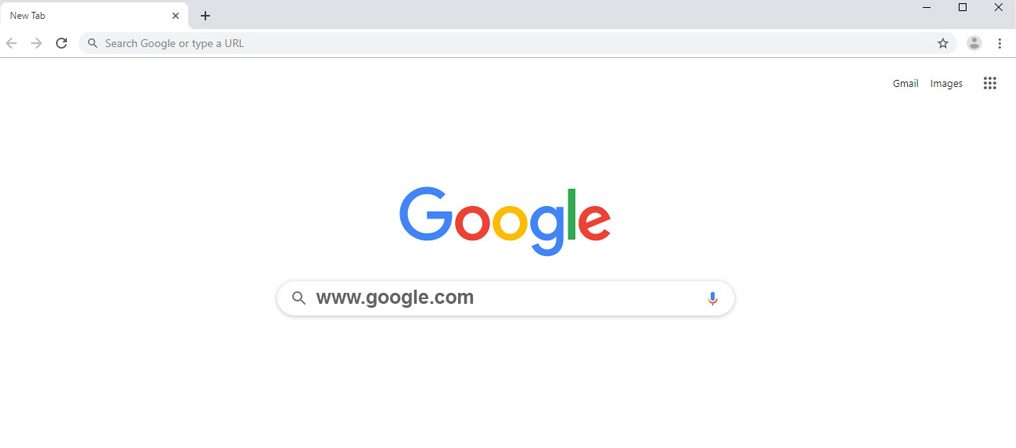
For example, www.google.com is the domain name of the Google search engine.
The real-world equivalent of a domain name would probably be the postal address of your business or home. However, if we were to get pedantic, a domain name is not your website address.
An IP address looks something like this:
In the older IP4 system – 172.190.1.8
In the newer IP6 system – 1900:cb001:1024:9::d756:b4c2
But if we had to enter numbers like these to visit our favorite websites, the internet would not be as easy to use as it is right now. This is why they created domain names. A domain name is like a link on top of an IP address.
When you enter the domain name, the computer network will look for the IP address associated with that particular domain name. The system exists purely as an additional layer to make the internet more user-friendly.
How To Get A Domain Name?
To get a domain name, choose a domain registrar, check domain name availability, register the domain name, verify and configure the domain settings, and use it for your website or online presence. Several different types of domains exist simultaneously in a full domain name.

These include:
Second Level Domain (SLD): This is the unique name of the company or brand which is expressed in the domain name/website. For example, in www.nytimes.com, “nytimes” is the SLD.
Top Level Domains (TLDs): Also known as domain extensions, these are the letters that appear after your SLD and the dot. TLDs include “.com,” “.org,” “edu” and so on, signifying the role or type of the website. You can also have TLDs signifying your location, like .uk for the United Kingdom and .ca for Canada.
You will have to pick both an SLD and a TLD when buying a domain name.
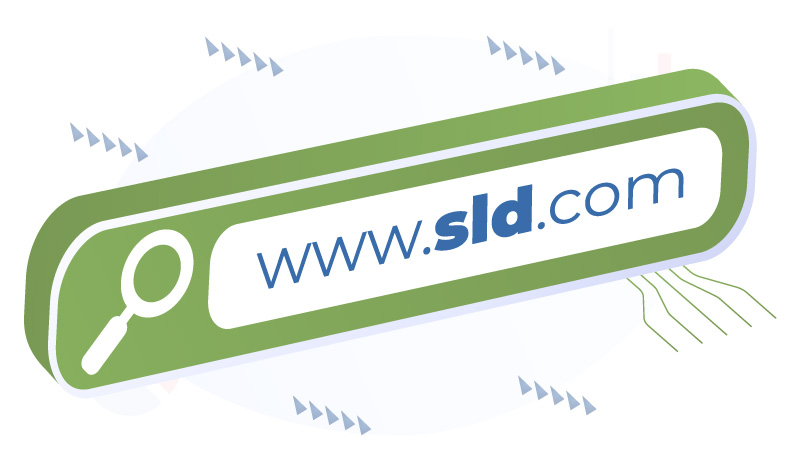
The cost of the domain name can change depending on your choice of TLD – some are more expensive than others. Keeping that in mind, here are the main steps to getting a domain name for your website:
Find a Reliable Domain Registrar – a domain registrar is an entity from which you can buy domain names. The Internet Corporation for Assigned Names and Numbers (ICANN) is a non-profit organization that plays a key role in maintaining domain names on the internet. It also provides accreditation for domain registrars – pick anyone from the accredited list.
Check Your Domain Availability – if you have a preferred domain name, based on your business or personal name, check if someone else already owns it using a domain availability checker tool. Most registrars have one on their website.
Pick the Best Available Option – more often than not, your first choice domain name may already be taken. You have several options here – try to buy that domain from the current owner, pick another TLD extension like .net instead of .com, or keep looking for another available domain name.
Buy and Register Your Domain – once you find an available domain, you can check the cost and pay it to gain ownership. Some domains can be had for as low as $10 or $12. To buy a domain name, you will have to provide some details like your contact information and email.
Verification – you will receive a verification email in your inbox from the domain registrar after purchase. Click on the link provided to verify your ownership of the domain. You may now use the domain name to host your website!
Different Types Of Web Hosting Services
A hosting service company will provide two major resources to its clients:
Disk space to store the website files and data
Bandwidth to accommodate incoming traffic from visitors
Websites come in all shapes and sizes, from local businesses to large globally-known brands. For instance, a local plumbing business would have a site with a smaller audience and less traffic when compared to a multinational software company.
As such, the local company website requires far fewer storage data and bandwidth resources. The international brand, with its lavishly designed site, filled with videos, high-definition images, and multimedia content will require more resources to run properly.
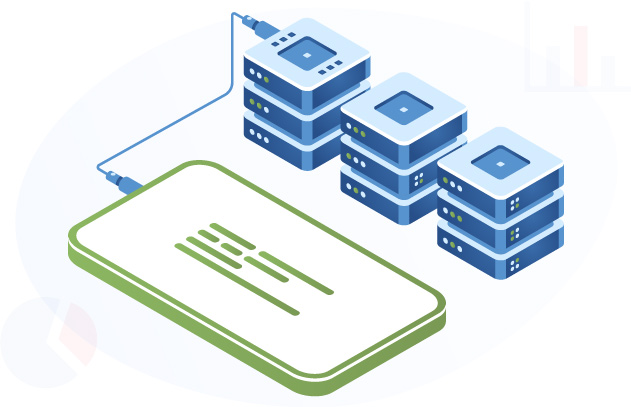
A web hosting company runs a very flexible business model. It will offer several tiers of services, with varying levels of resource allocation. Higher tiers are reserved for larger corporations and are priced accordingly.
Based on this model, we can broadly divide the web hosting options into the following categories:
Shared Hosting
This is ideal for individuals running small blogs/websites, and smaller businesses and startups in the very early stages of their growth journey.

When you subscribe to a shared hosting service, your website will share a common server with many other small websites.
Since multiple clients use the same server, the hosting company can price this service aggressively. In this tier, you can often web host for as low as $2.75 to $7.99 per month.
The main con is that you don’t get advanced features like a free domain name and email services. You will have a tough time if your website suddenly attracts a lot of visitors due to the low bandwidth on offer.
Virtual Private Server (VPS) Hosting
As the name suggests, virtual private server hosting is not a dedicated server host meaning that you do not get the entire all to yourself. Instead, you get an entire partition on the server to yourself, with dedicated resources.

The VPS system is a bit more advanced than plain shared hosting.
You will get a dedicated control panel to manage your bandwidth and server resources. With prices starting around $29.99, this option is best suited for medium-sized businesses, and blogs/websites that have a dedicated audience.
Managed WordPress Hosting
WordPress is a popular content management tool used to create websites. It is popular because you can use it for free, and more importantly, you don’t need any specialized coding knowledge.
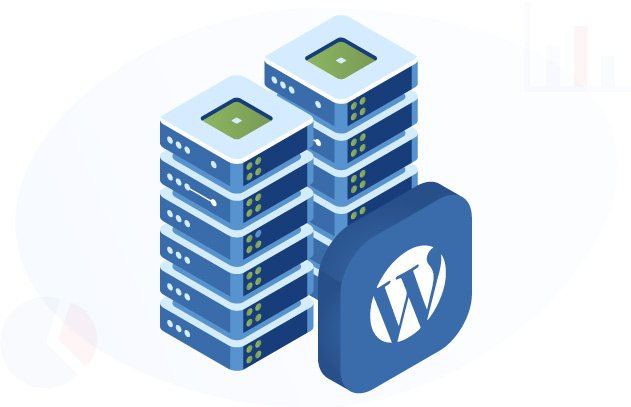
Some web hosting companies offer dedicated server hosting sites made with WordPress.
In this managed WordPress hosting, your internet service hosting provider will handle the technical side of running a WordPress website – updating the software, maintaining backups, caches, and more. This allows you to focus more on the content and design aspects of your website.
Managed WordPress hosting is significantly more expensive than shared hosting and can cost you upwards of $35 per month. If you get a lot of visitors on your site and you don’t have much experience with the technical side of WordPress, this is a great option for you.
Dedicated Server Hosting
This option allows you to get an entire dedicated server for your website. All the resources of the server are at your disposal. You also have the freedom to install your preferred web server software, operating system, and other advanced tools.

Naturally, using a dedicated server requires considerable networking knowledge and skills. It is only ever an option for larger websites that draw high volumes of inbound traffic and require higher performance as a result.
Ecommerce stores, big brand websites, and other popular entertainment/news/information sites will be the usual customers of dedicated server hosting. It is also the most expensive type of web hosting, with prices starting at $79.99 per month.
Cloud Hosting
Instead of being restricted to a single server, your website (or group of websites) is hosted across multiple servers in a cloud network. This is a very dynamic arrangement, where the system will allocate more resources to you whenever there is a spike in traffic.

This arrangement also helps prevent cyber attacks such as someone trying to take down your website because your website is hosted across multiple servers. If one server goes down your website is still live from another server.
These days, cloud hosting has become quite popular due to its flexibility and resilience. Due to the dynamic resource allocation, even smaller websites and businesses can now opt for cloud hosting, with prices starting at $4.50.
Steps To Host A Website
Now that we have established the basics of websites, web hosting, domain names, and service hosting provider, it is time to take a closer look at the actual process of hosting your own website, from start to finish.
Step 1 – Figure Out Which Type Of Website You Want
Before you can make important decisions regarding the type of web hosting provider and servers, you need to decide the type of website you will be running.

Websites on the internet broadly fall into two categories, a basic version and a more sophisticated/advanced version:
Static Website
This is the basic version of a website. It is easy to build and costs less money and effort. If you have coding knowledge, you can design webpages using HTML, CSS, and JavaScript.

But if you don’t have any background in coding, there are easier software tools/editors that you can use, like WordPress.
Static websites do not have any advanced features like user interactions and web hosting accounts. If you want to make any changes, like updates to prices or product information, you have to enter each change manually.
Due to this reason, this type of website is not suitable for e-commerce activities. They are ideal for simple blogs and basic business websites.
Dynamic Website
This type of website uses programmed scripts on the client-side and server-side to make changes to the site automatically depending on various factors like time of day, type of visitor, and so on.

Do you know how you get personalized suggestions whenever you visit certain eCommerce sites like Amazon? That is the magic of server-side scripts and apps in action.
On dynamic sites, your audience can leave comments, make reviews, leave ratings, and interact with your business in various exciting ways.
Popular blogs with high levels of user interaction, eCommerce sites, and big businesses all use dynamically scripted sites for maximum engagement.
Step 2 – Choose A Hosting Server
If you have a static website, you don’t have to worry too much about advanced server features. Static websites will run okay on most hosting platforms.
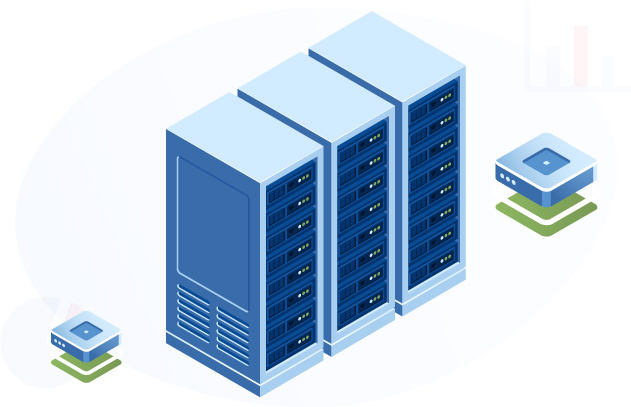
But when it comes to programmable scripts and apps on your websites, you have to decide between two major platforms:
Windows Hosting – based on Microsoft technologies like .NET, MS SQL servers, and Access databases, these platforms allow you to use ASP scripts on your dynamic website.
Linux Hosting – using MYSQL databases, this platform allows you to run scripts in a wide array of Unix-based languages like PHP, Perl, and Python.
The overwhelming majority of web servers (nearly 70%) run on the platform Unix, with Linux alone hosting accounting for (40%) of the market. Windows is available on around 30% of the server networks.

The reason is quite simple – Windows is a paid service from Microsoft corporation, while Linux and Unix are free open-source software. The latter is more popular because they are available at a lower cost from hosting companies.
Step 3 – Select Your Web Hosting Plan
We have already covered the four main types of hosting in the previous section. Here is a quick guide to selecting the ideal type for your purpose:
On a Budget: If you are on a tight budget and just want to get a small website up and running, you can go for a shared hosting plan. You will still get your own secure web hosting account with login credentials.
For Security on a Budget: If you are a business owner who needs more security than a shared plan, VPS hosting is the ideal option. It is less expensive than getting an entire server, but still gives you a reasonable amount of security through your own partition.
For a Large Business: If your website will receive heavy traffic, or if you run a larger business, renting an entire server through dedicated hosting is the logical option. You get more bandwidth, more security, and advanced controls, but at a higher expense.
For WordPress users: If your website is designed in WordPress and your tools and features are dedicated to WordPress on your server, you can opt for a managed WordPress hosting platform.
For Scaling: If you want a more dynamic platform with the ability to scale the available resources according to your growth trajectory, you can opt for a cloud web hosting provider. It is a great option for startups gunning for rapid growth and fast user acquisition.
FAQs About How To Host A Website
What Is The Meaning Of hosting A website?
Hosting a website means finding a place online to store its files, videos, images, apps, and other related content.

When you run a website, all of its files are stored on special computers called web servers, owned by hosting companies. These companies rent out hosting space to businesses, government agencies, and individuals who want to own and operate a website.
What Do You Need To Host A Website?
To host a website, you first need to register and buy a domain name for your website. Then you have to rent server space from a web service hosting provider.
Once you have them both, you can either design a website on your own or pay someone to do it and load it onto the hosting platform.
Why Do I Need A Hosting Provider For My Website?
You need a hosting provider in order to run your website properly. Running a website 24×7 requires a set of high-tech features and skilled maintenance staff. Only large web hosting providers have the resources and expertise to deliver these. They also ensure that your website is safe from cyber threats like hacking and DDoS attacks.
How Much Does It Cost To Host A Website?
The cost of hosting a website can vary wildly, depending on the size of your business, the size of your target audience, expected visitors to your site, and several other factors. Depending on these factors, you can pick hosting plans that vary in price.

The cheapest shared hosting plans start at around $2.50 to $4.50 per month. Expensive dedicated server plans can start from $50. Large corporations and big news websites may pay thousands of dollars per month as hosting fees.
Can I Host A Website On My Personal Computer?
You can host a website on your PC or laptop technically. But it is only advisable in the following situations:
 To learn web development and coding, WordPress, and so on.
To learn web development and coding, WordPress, and so on. To test a website before putting it on a proper web server.
To test a website before putting it on a proper web server.
If you want to make the website available to the wider public, always pick a hosting platform. Your personal computer and internet connection may not be secure or capable enough for the task of hosting a website.
Do I Have To Buy Domain Name And Hosting From The Same Company?
You don’t have to buy a domain name and hosting from the same company, but it is much more convenient to buy them both from the same service hosting provider if possible. You can manage both from the same dashboard.

Some service web hosting providers may offer discounts or even free domain names if you buy them together.
Do I Have To Buy Both Domain Name And Web Hosting Service At The Same Time?
You don’t have to buy a domain name and web service at the same time. You can always buy one first and then pick the other one up later. If you see a domain name you want available for sale online, you can snap it up for later use. Just remember that to run a website, you need both components simultaneously.
Can I Switch From One Web Hosting Service To Another?
Yes, you can switch companies at any point in time. There is no rule that you have to stick with a provider for X months after starting your subscription. We have a separate guide on changing your web hosting provider here.
Are SEO Tools Included With Website Builders?
Yes, SEO tools are included with website builders. Most builders are created with an architecture that facilitates the discovery of information by search engines.

In addition, many platforms include capabilities for customizing your site’s meta descriptions, automatic data formatting, and simple social network integration to facilitate cross-platform content sharing.
What Are the Best Web Hosting Services for Small Businesses?
Which web host is appropriate for your company will depend on your unique needs. For example, A2 Hosting is considered the best web host for performance, and DreamHost is the best web host for WordPress novices.
You need to do your own research and learn what sets the best web host companies apart.
Ready to Create Your Website?
Picking the right web hosting service provider can be hard if you are building your first website. You need a trusted internet service provider that offers a wide array of tools and features at a low cost.
To save time and money looking for the best web host company that meets your needs check out our guide to the best web hosting companies. There you will find helpful tips for looking for the best web host service that meets your needs as well as graphics and pricing breakdowns.

